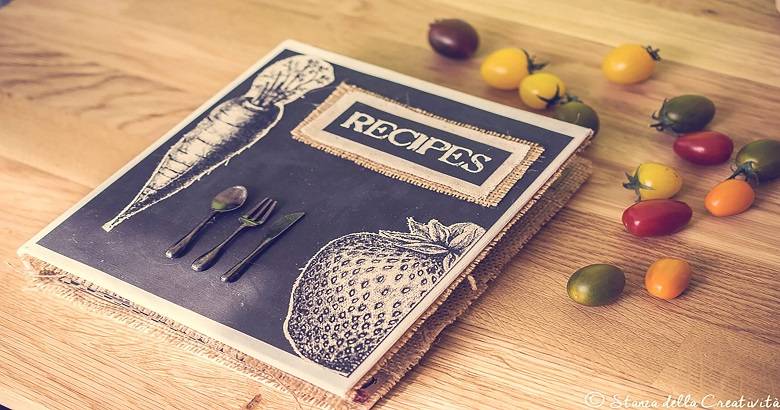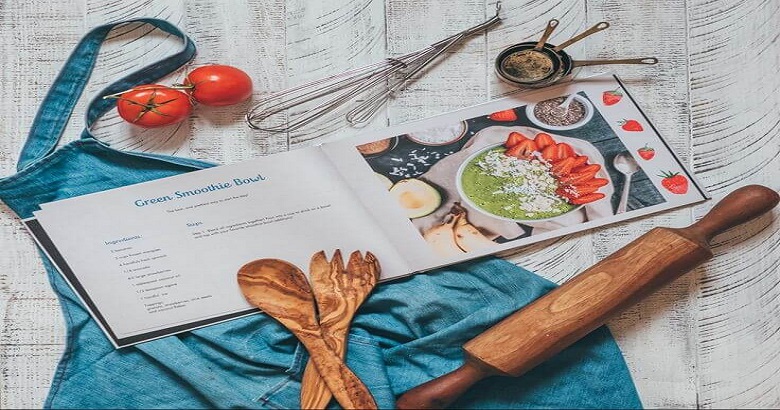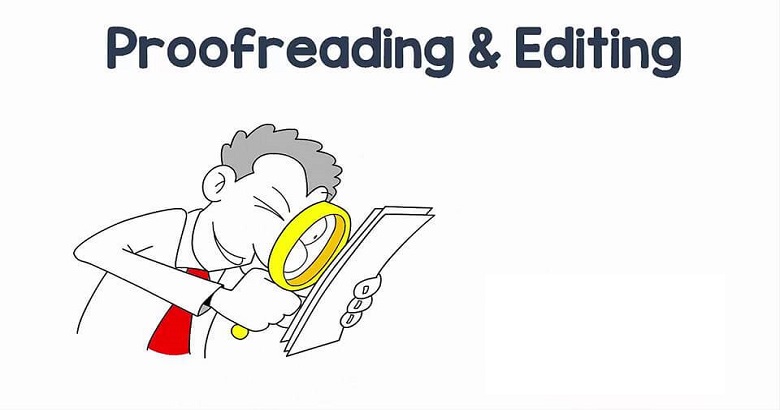Publishing a recipe book can be a fulfilling and lucrative endeavor. Whether you’re a professional chef, a passionate home cook, or someone with a treasure trove of family recipes, sharing your culinary creations with the world can be incredibly rewarding. This guide will take you through the steps to successfully publish a recipe book, from initial concept to final publication.
Figure Out Some of These Things!
Defining Your Purpose
Before you begin, clarifying why you want to publish a recipe book is crucial. Your purpose will guide your decisions throughout the process. Consider the following reasons:
- Personal Passion: Sharing your love for cooking and your favorite recipes.
- Professional Development: Establishing yourself as an expert in the culinary field.
- Cultural Preservation: Documenting and preserving family or cultural recipes.
- Monetary Gain: Creating a product to sell and generate income.
Identifying Your Audience
Understanding your target audience is essential for creating a recipe book that resonates with readers. Consider:
- Demographics: Age, gender, income level, and other relevant factors.
- Culinary Interests: What cuisine or dietary preferences do they have?
- Skill Level: Are they beginners, intermediate cooks, or advanced chefs?
Planning Your Recipe Book
Choosing a Theme and Structure
The theme and structure of your recipe book will guide its content and layout. Some popular themes include:
- Cuisine-Specific: Focusing on a specific type of cuisine, such as Italian, Mexican, or Thai.
- Dietary Preferences: Catering to specific diets, such as vegan, gluten-free, or keto.
- Occasions: Recipes for holidays, parties, or everyday meals.
- Skill Level: Recipes tailored for beginners, intermediate cooks, or advanced chefs.
Creating an Outline
An outline will help you organize your ideas and ensure your recipe book flows clearly. Consider the following components:
- Introduction: Explain the purpose of the book and your culinary philosophy.
- Chapters: Divide the book into sections, each focusing on a different category of recipes (e.g., appetizers, main courses, desserts).
- Recipes: List the recipes you plan to include in each chapter.
Setting a Timeline
Establish a realistic timeline for writing, testing, photographing, editing, designing, and publishing your recipe book. Break the process into smaller tasks with specific deadlines to keep yourself on track.
Writing Your Recipes
Developing and Testing Recipes
Ensure that each recipe is well-developed and thoroughly tested. This process includes:
- Creating Recipes: Developing original recipes or refining existing ones.
- Testing Recipes: Cooking each recipe multiple times ensures accuracy and consistency.
- Writing Detailed Instructions: Providing clear, step-by-step instructions that are easy to follow.
Writing Engaging Content
In addition to recipes, your book should include engaging content that adds value to the reader. Consider:
- Headnotes: Brief introductions to each recipe that provide context, tips, or personal anecdotes.
- Ingredient Descriptions: Detailed descriptions of key ingredients and their roles in the recipes.
- Cooking Tips and Techniques: Helpful tips and techniques to improve the reader’s cooking skills.
Designing Your Recipe Book
Visual Elements
The visual elements of your recipe book are crucial for its appeal. Consider the following:
- Photography: High-quality photographs of your dishes are essential. Hire a professional food photographer, or invest time learning food photography techniques.
- Illustrations: Consider adding illustrations, such as step-by-step diagrams or decorative elements, to enhance the book’s visual appeal.
- Layout and Design: A clean and attractive layout that is easy to navigate. Use design software like Adobe InDesign or Canva to create your book’s layout.
Cover Design
The cover is the first thing potential readers will see, so it must be eye-catching and reflect your book’s theme. Consider:
- Title and Subtitle: Clear and descriptive, capturing the essence of your book.
- Cover Image: A compelling image that represents the content and style of the book.
- Typography: Readable and attractive fonts that complement the overall design.
Editing and Proofreading
Self-Editing
Start by editing your work to catch obvious errors and improve content flow. Look for:
- Clarity and Consistency: Ensure your recipes and instructions are clear and consistent throughout the book.
- Grammar and Spelling: Correct any grammatical or spelling errors.
- Layout and Design: Check for any design inconsistencies or layout issues.
Hiring Professional Editors
Consider hiring professional editors for a more thorough review. Types of editing include:
- Developmental Editing: Focuses on the overall structure and content, ensuring the recipes and supplementary content are well-organized and engaging.
- Copyediting: Ensures the text is clear, correct, and consistent. This includes grammar, punctuation, and syntax.
- Proofreading: The final step is to catch any remaining errors, focusing on typos and minor mistakes.
Choosing a Publishing Method
Self-Publishing
Self-publishing gives you full control over the process, from content to marketing. It’s also a faster route to market compared to traditional publishing. Key steps include:
- ISBN and Copyright: Obtain an ISBN for your book and register for copyright protection.
- Print-On-Demand (POD) Services: Use services like Amazon KDP, IngramSpark, or Lulu to print and distribute your book.
- Ebook Formatting: Convert your recipe book into ebook formats (e.g., EPUB, MOBI) for distribution on platforms like Kindle, Apple Books, and Google Play.
Traditional Publishing
Traditional publishing involves submitting your recipe book proposal to publishers. This method can offer wider distribution and more resources but is often competitive. Key steps include:
- Book Proposal: Create a compelling book proposal that includes a summary, target audience, market analysis, sample chapters, and your author bio.
- Literary Agent: Consider hiring a literary agent to help pitch your book to publishers.
- Submission: Submit your proposal to publishers specializing in cookbooks or your culinary niche.
Hybrid Publishing
Hybrid publishing combines elements of both self-publishing and traditional publishing. You may pay for some services upfront in exchange for higher royalties and more control over the process. Ensure you research hybrid publishers thoroughly to choose a reputable one.
Printing and Production
Print Quality
High-quality printing is essential for a recipe book, enhancing visual appeal and durability. Consider:
- Paper Quality: Choose high-quality paper that showcases your photos beautifully and withstands kitchen use.
- Binding Options: Decide between options like hardcover, paperback, or spiral-bound, depending on your budget and target audience.
Print-On-Demand (POD) Services
POD services are a cost-effective way to print your book as orders come in, reducing upfront costs and inventory risk. Popular POD services include:
- Amazon KDP: Offers extensive reach and the ability to print paperback and hardcover books.
- IngramSpark: Provides access to a wide distribution network, including bookstores and libraries.
- Lulu: Known for high-quality printing options and customizable features.
Distribution and Marketing
Setting Up Distribution Channels
To make your recipe book available to readers, set up distribution through various channels:
- Online Retailers: Platforms like Amazon, Barnes & Noble, and other online bookstores.
- Brick-and-Mortar Stores: Partner with local bookstores, specialty food stores, and gift shops.
- Libraries: Use services like IngramSpark to distribute your book to libraries.
- Direct Sales: Sell directly through your website, social media, or at food festivals and events.
Marketing Strategies
Effective marketing is crucial for the success of your recipe book. Here are some strategies:
- Author Platform: Build a strong online presence through a professional website, blog, and social media.
- Email Marketing: Create an email list to inform potential readers about your book’s release and promotions.
- Book Launch Events: Host virtual or in-person launch events to generate excitement and sales.
- Media Coverage: Reach out to food bloggers, influencers, and journalists for reviews and features.
- Advertising: Invest in targeted ads on platforms like Facebook, Instagram, and Google to reach your audience.
Leveraging Reviews and Testimonials
Positive reviews and testimonials can significantly boost your book’s credibility and sales. Encourage readers to leave reviews on the following:
- Amazon and Goodreads: These platforms are critical for discoverability and credibility.
- Your Website: Feature testimonials prominently on your website.
- Social Media: Share positive feedback on your social media channels.
Legal and Financial Considerations
Copyright and ISBN
Secure your intellectual property by:
- Registering Copyright: Protects your work legally and gives you the exclusive right to reproduce and distribute your book.
- Obtaining an ISBN: A unique identifier for your book that is necessary for most distribution channels.
Budgeting and Financial Planning
Publishing a recipe book involves various costs. Create a detailed budget that includes:
- Writing and Editing: Costs for professional editing services.
- Design: Expenses for cover design, photography, and interior layout.
- Printing: Costs for POD or offset printing.
- Marketing: Budget for advertising, promotional materials, and book launch events.
Royalties and Pricing
Set a competitive price for your recipe book that covers your costs and provides a reasonable profit. Consider:
- Production Costs: Ensure your price covers the cost of printing and production.
- Market Rates: Research prices of similar books in your genre.
- Royalty Rates: Royalty rates will vary depending on your publishing method. Here’s a breakdown:
- Self-Publishing: You typically earn higher royalties, often between 60-70% of the book’s sale price.
- Traditional Publishing: Royalty rates are generally lower, around 10-15% of the book’s sale price, but you benefit from the publisher’s distribution and marketing efforts.
- Hybrid Publishing: Royalty rates can vary widely, so ensure you understand the terms before committing.
Post-Publication Activities
Engaging with Readers
Building a loyal reader base requires ongoing engagement:
- Social Media Interaction: Reply to comments, share behind-the-scenes content, and run interactive cooking challenges or Q&A sessions.
- Newsletters: Regularly update your readers with new recipes, cooking tips, and book-related news.
- Events and Workshops: Host cooking classes, book signings, and live demonstrations to connect with your audience in person or virtually.
Gathering Feedback
Feedback is invaluable for improving future projects:
- Surveys and Polls: Use tools like SurveyMonkey or Google Forms to gather reader opinions.
- Direct Feedback: Encourage readers to email you with their thoughts and suggestions.
- Analyzing Reviews: Pay attention to recurring themes in reviews to identify strengths and areas for improvement.
Planning Future Projects
Leverage the momentum from your first recipe book to plan future endeavors:
- New Recipe Books: Consider creating a series focusing on different cuisines, dietary needs, or cooking techniques.
- Companion Content: Develop related content such as cooking videos, blog posts, or a subscription-based recipe service.
- Collaborations: Partner with other chefs, food bloggers, or culinary brands to expand your reach and audience.
Conclusion
Publishing a recipe book is a multifaceted process that involves careful planning, creative execution, and strategic marketing. By understanding your purpose and audience, developing and testing your recipes, designing an appealing book, and choosing the right publishing method, you can create a recipe book that resonates with readers and stands out in the market.
Remember, the journey doesn’t end with publication. Engaging with your readers, gathering feedback, and planning future projects are crucial for long-term success. Whether you’re sharing cherished family recipes or innovative culinary creations, your recipe book has the potential to inspire and delight countless readers.
Good luck with your culinary publishing adventure!
Frequently Asked Questions
1. How should I organize the recipes in my book?
Organize recipes by category, such as appetizers, main courses, desserts, etc. You can also organize by ingredient type, cuisine, or difficulty level.
2. Do I need professional photos of my recipes?
Professional photos can greatly enhance the appeal of your recipe book. High-quality images attract readers and give them a preview of the finished dishes.
3. What elements should be included in each recipe?
Each recipe should include a title, list of ingredients with measurements, step-by-step instructions, cooking time, serving size, and any necessary tips or variations.
4. How can I ensure my recipe book stands out?
Focus on a unique theme or niche, provide high-quality content, and consider adding personal stories or tips to make your book more engaging.
5. What are the best publishing options for a recipe book?
Consider traditional publishing, which offers professional editing and distribution, or self-publishing, which allows for more creative control and higher royalties. Research platforms like Amazon Kindle Direct Publishing for self-publishing options.





